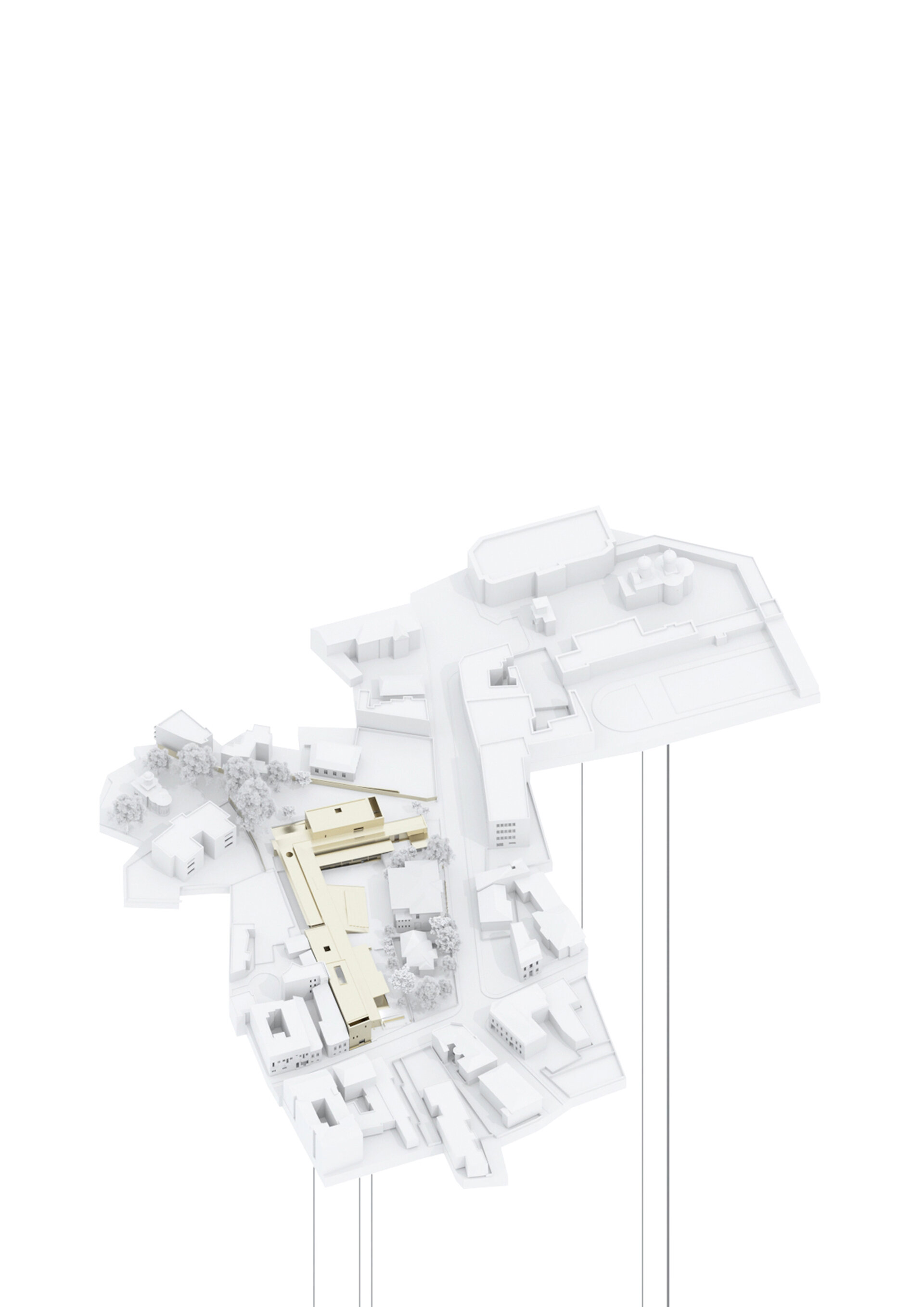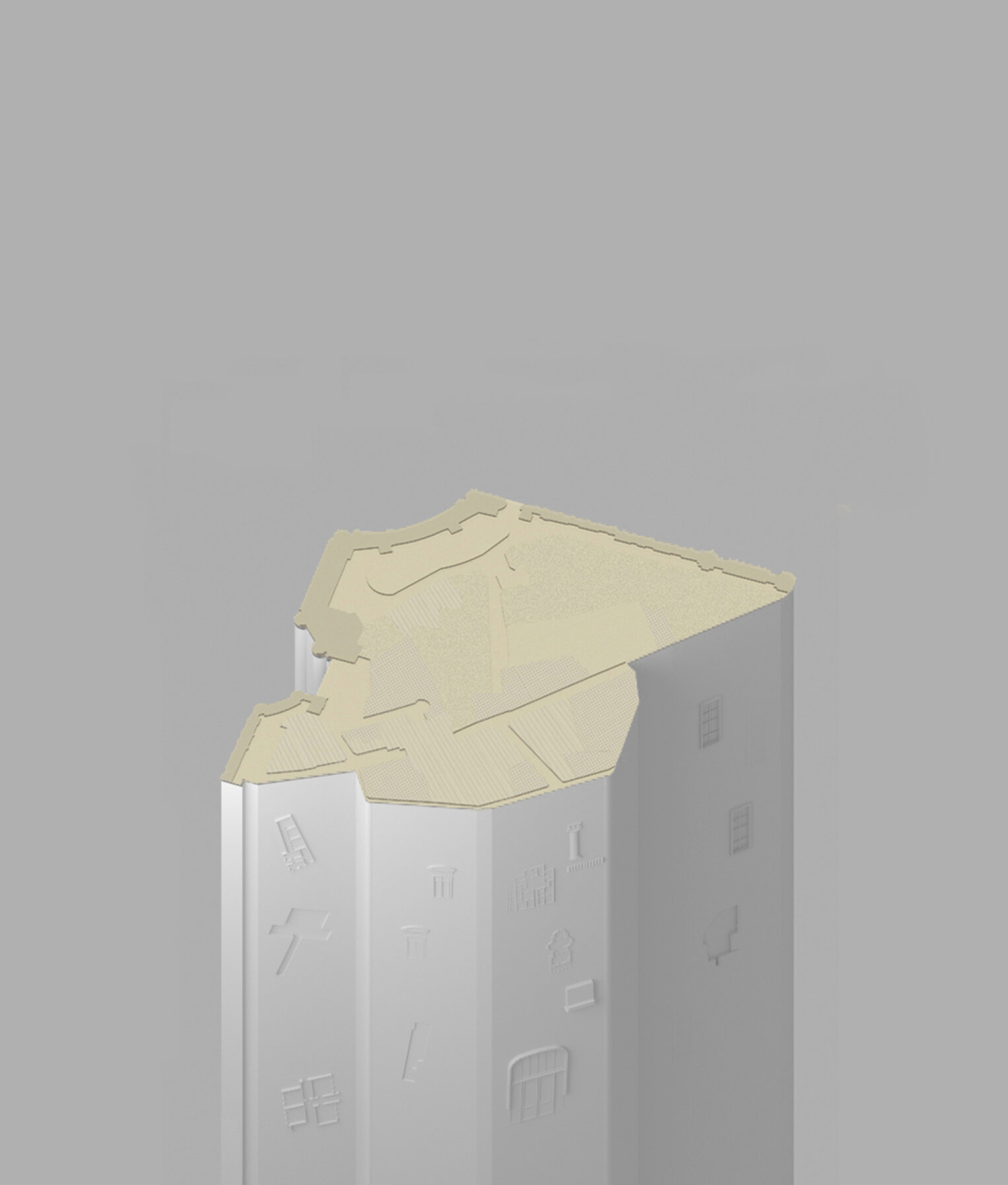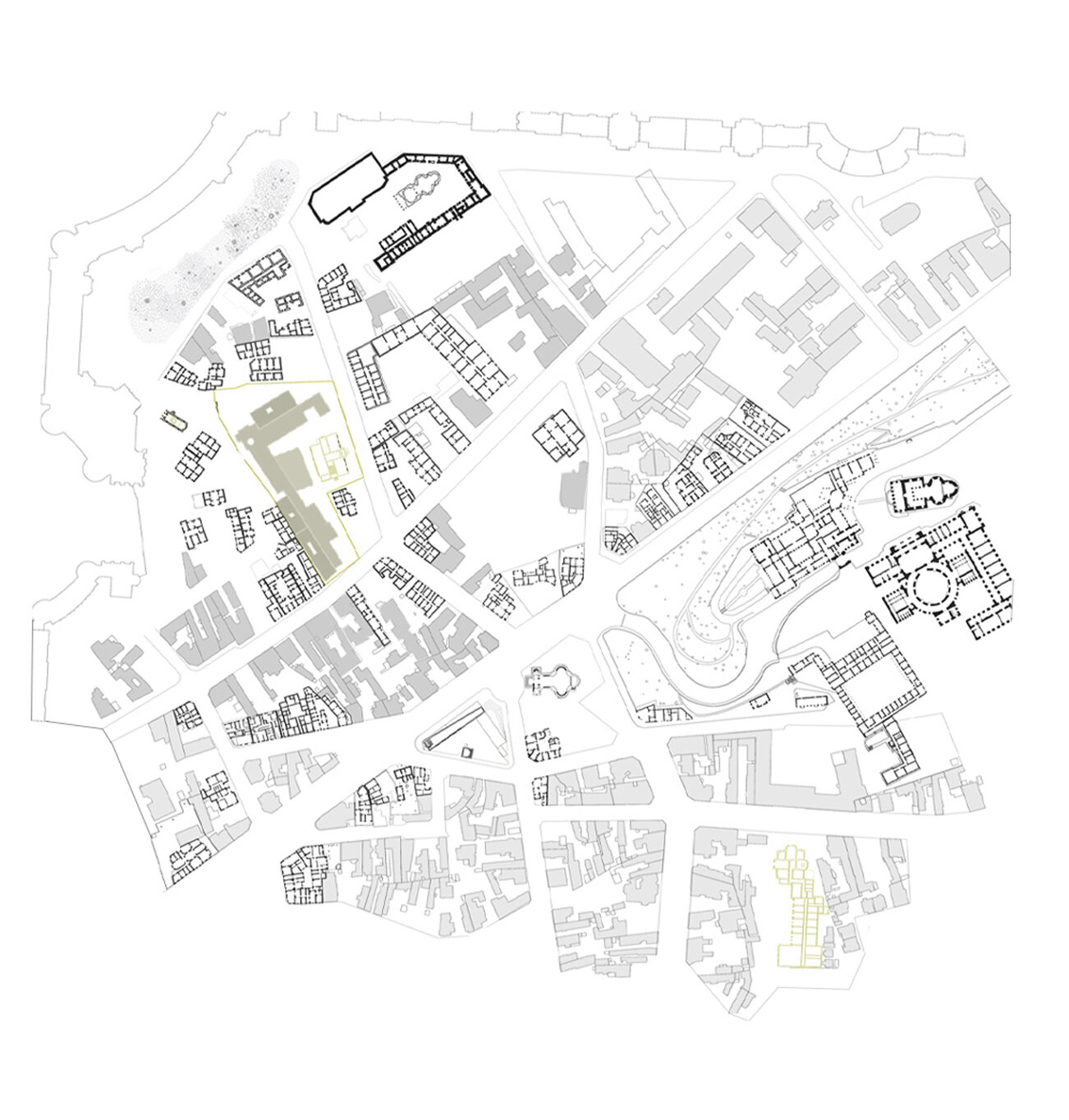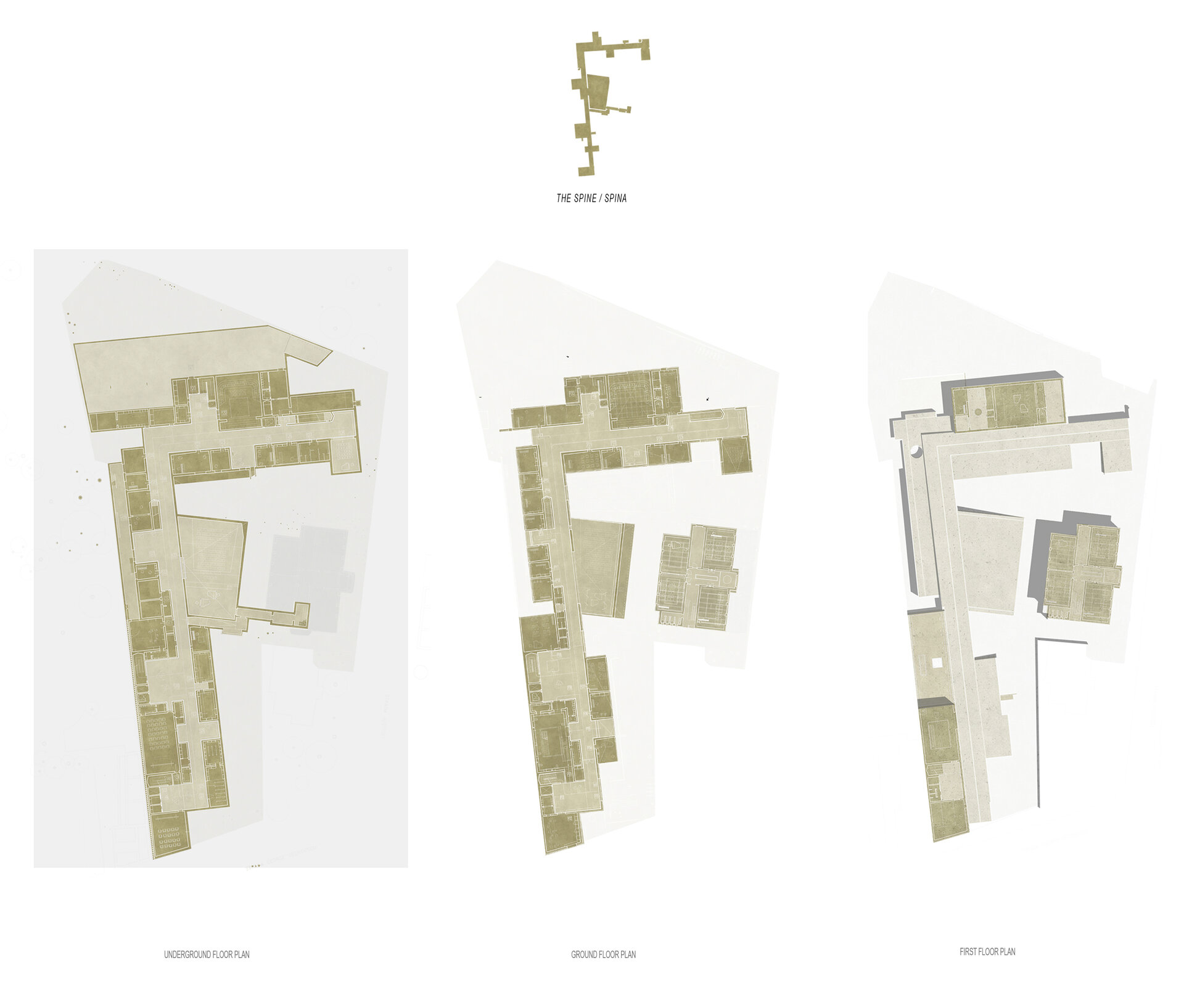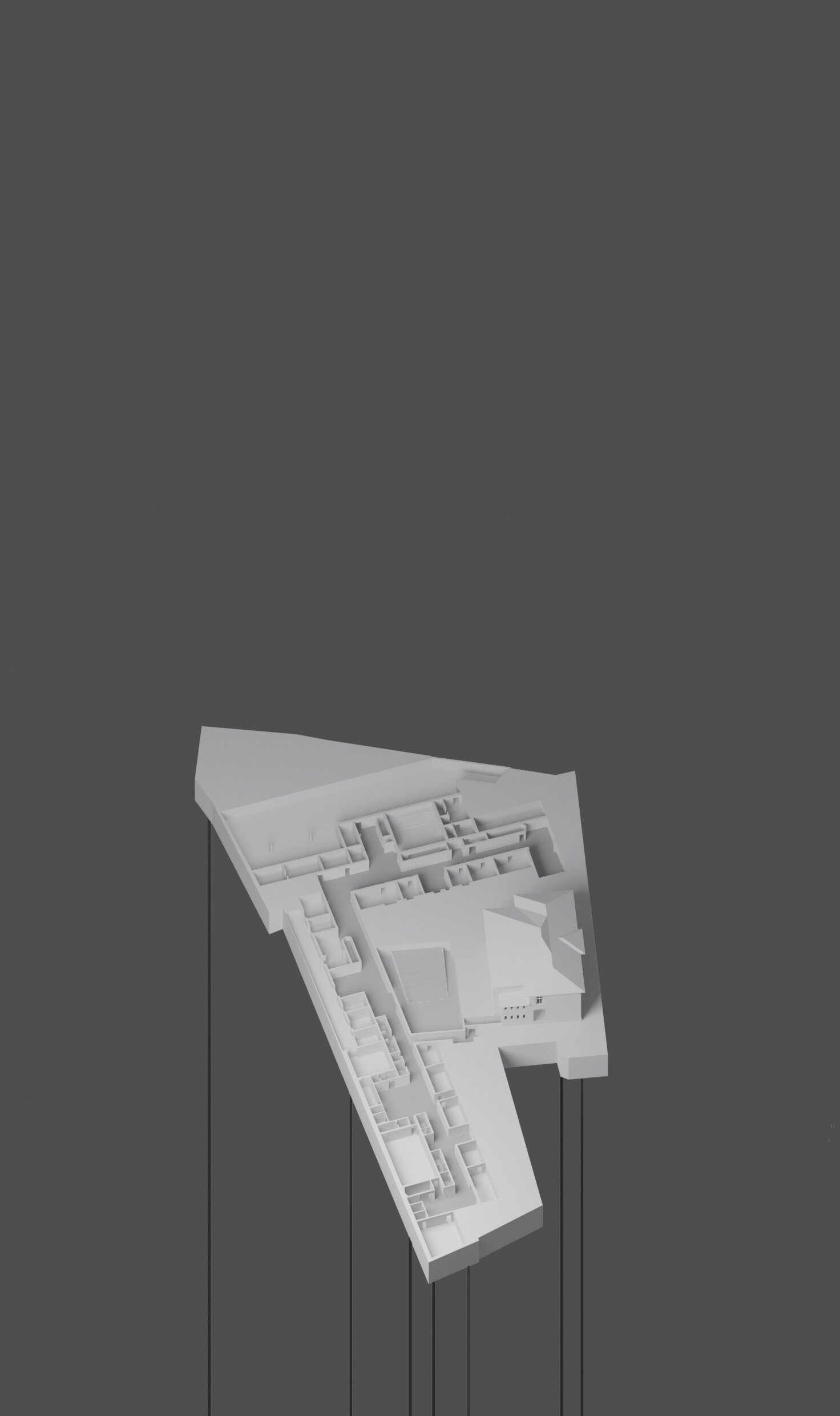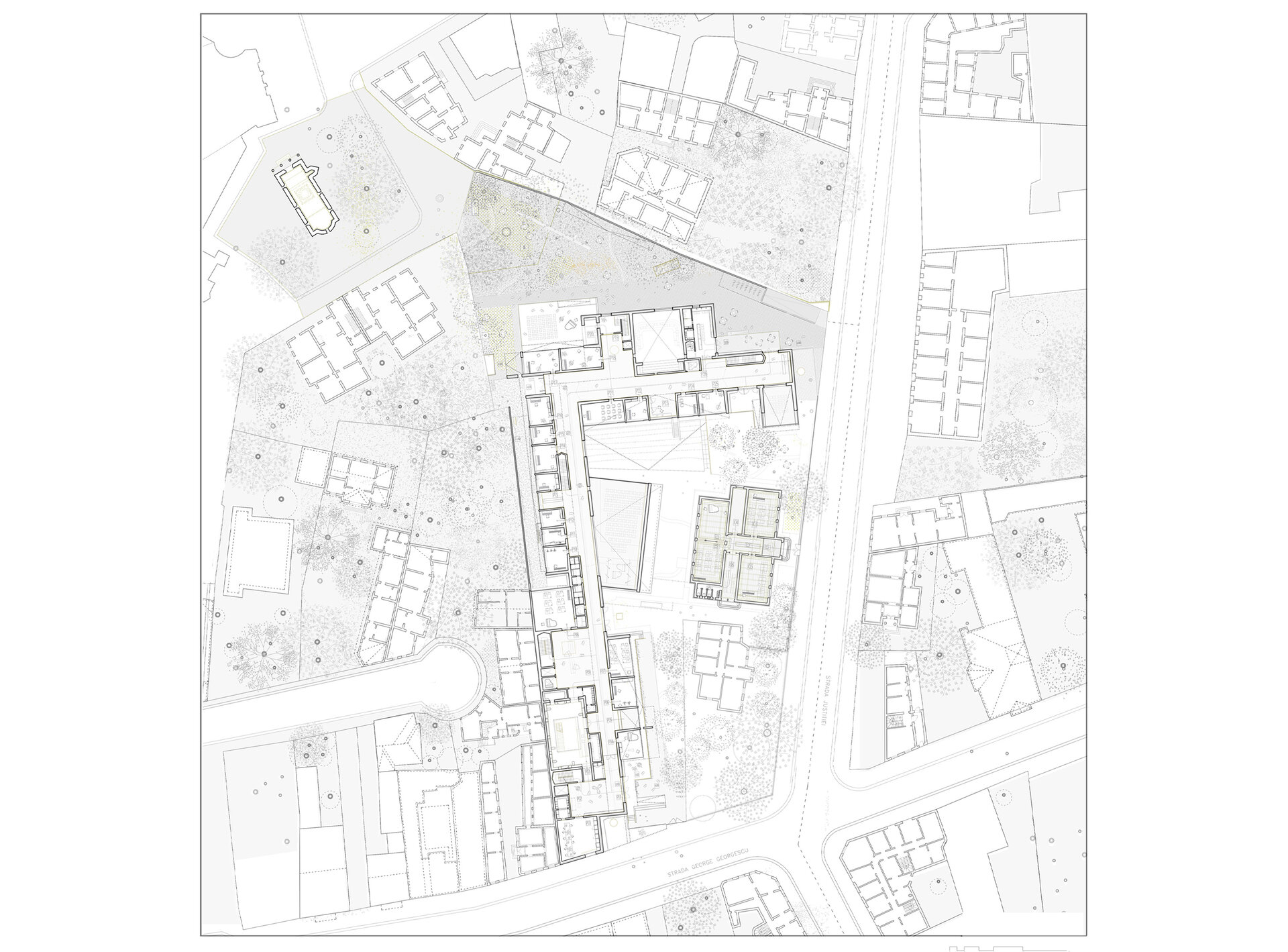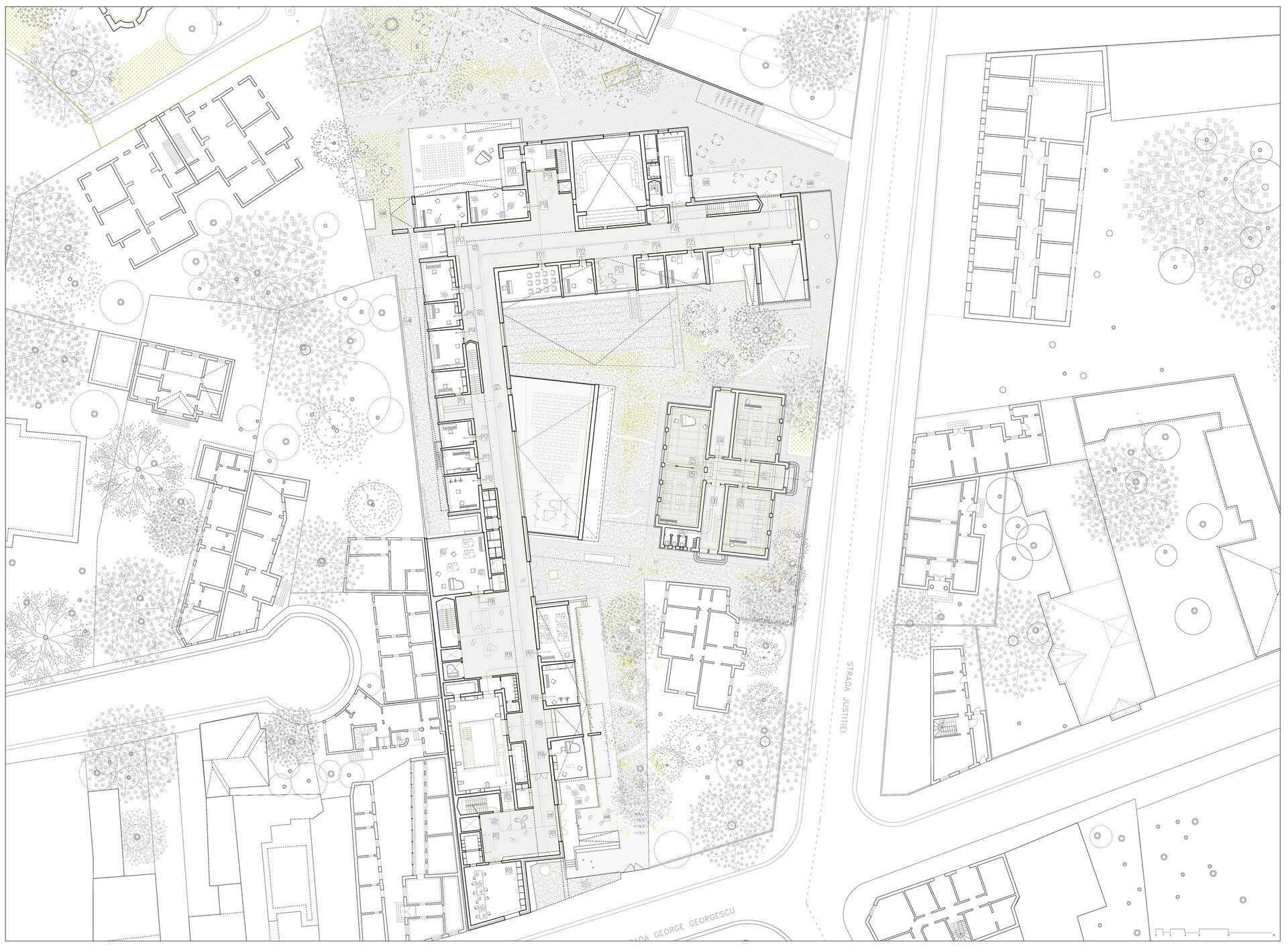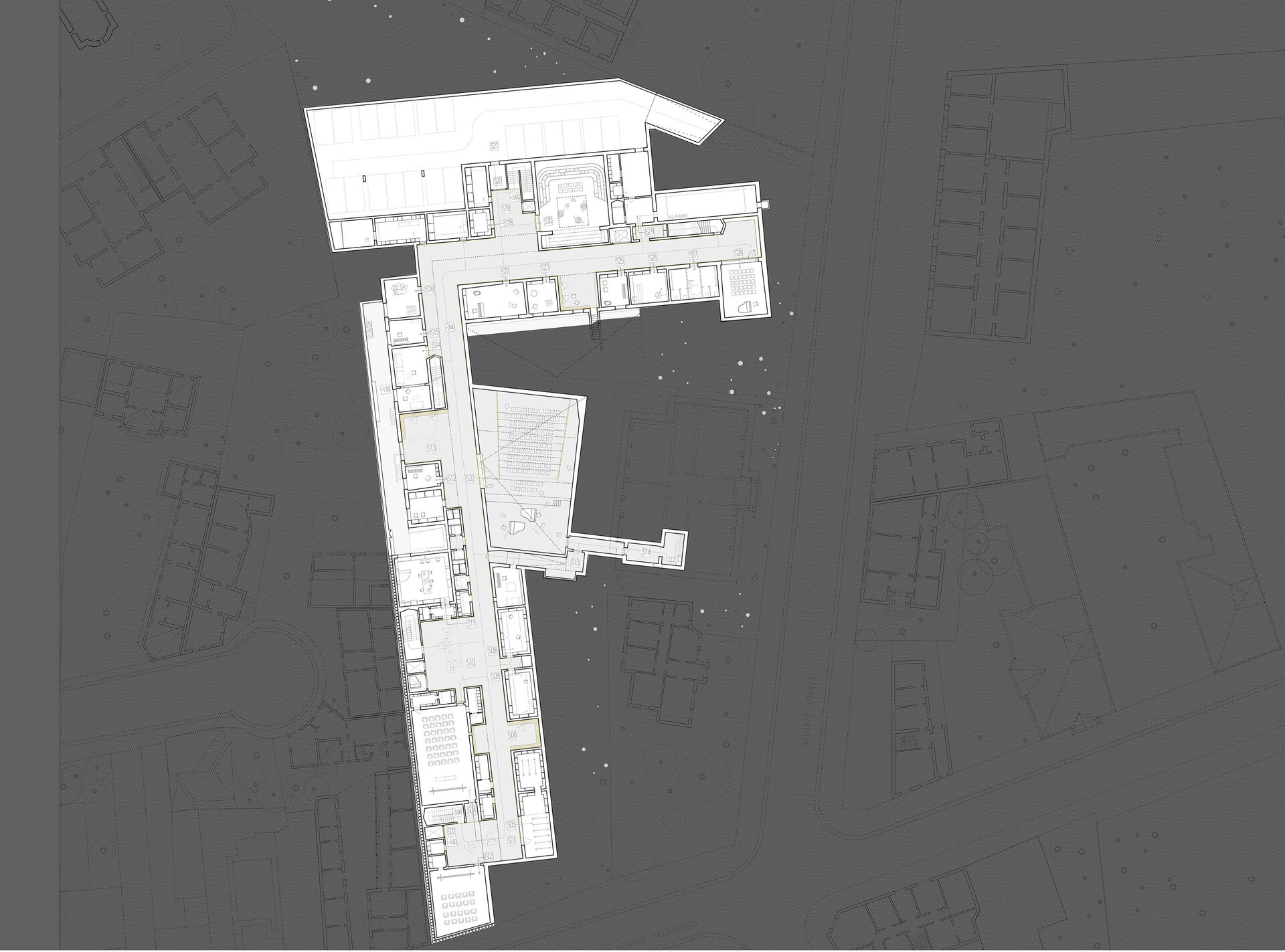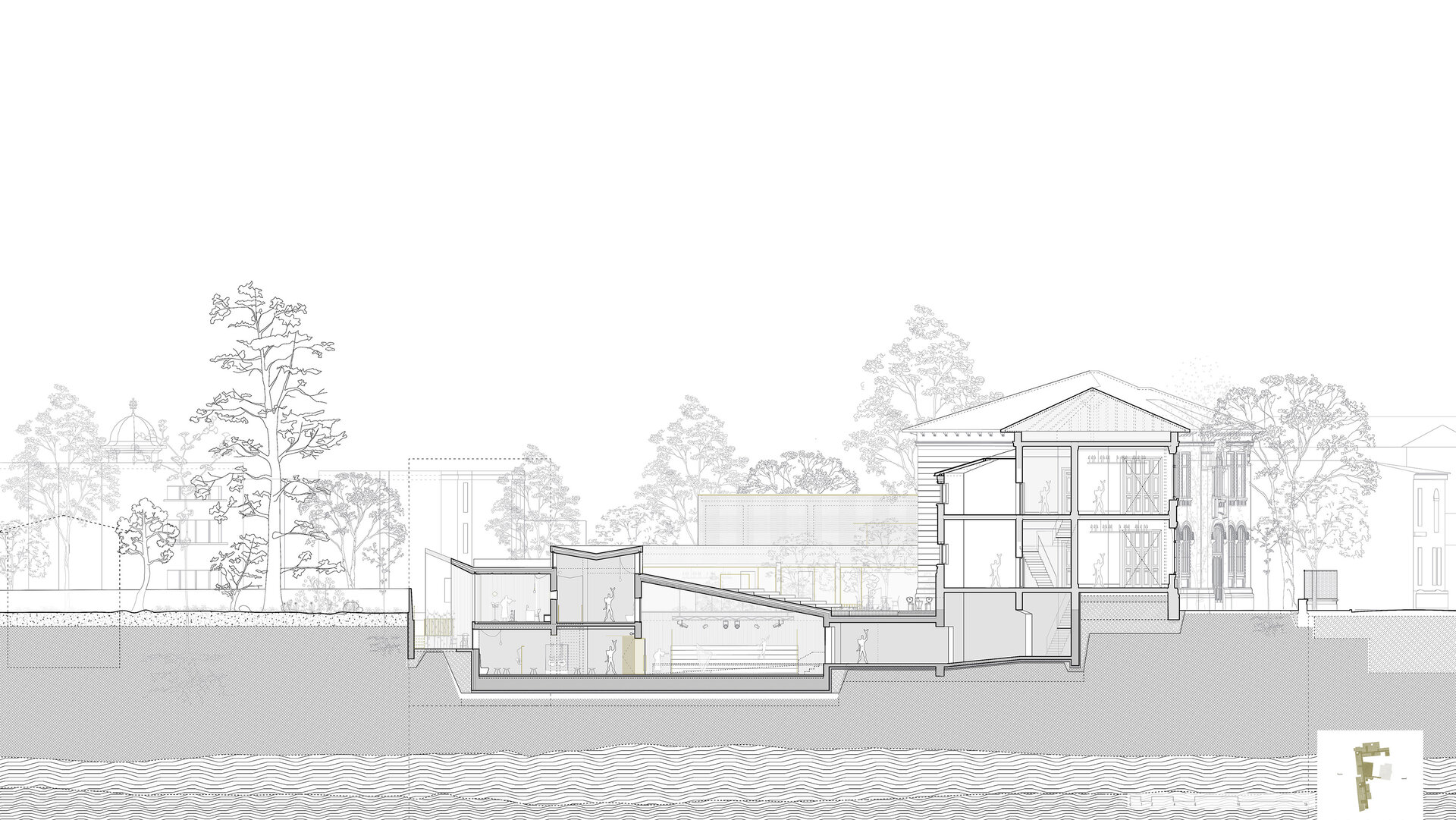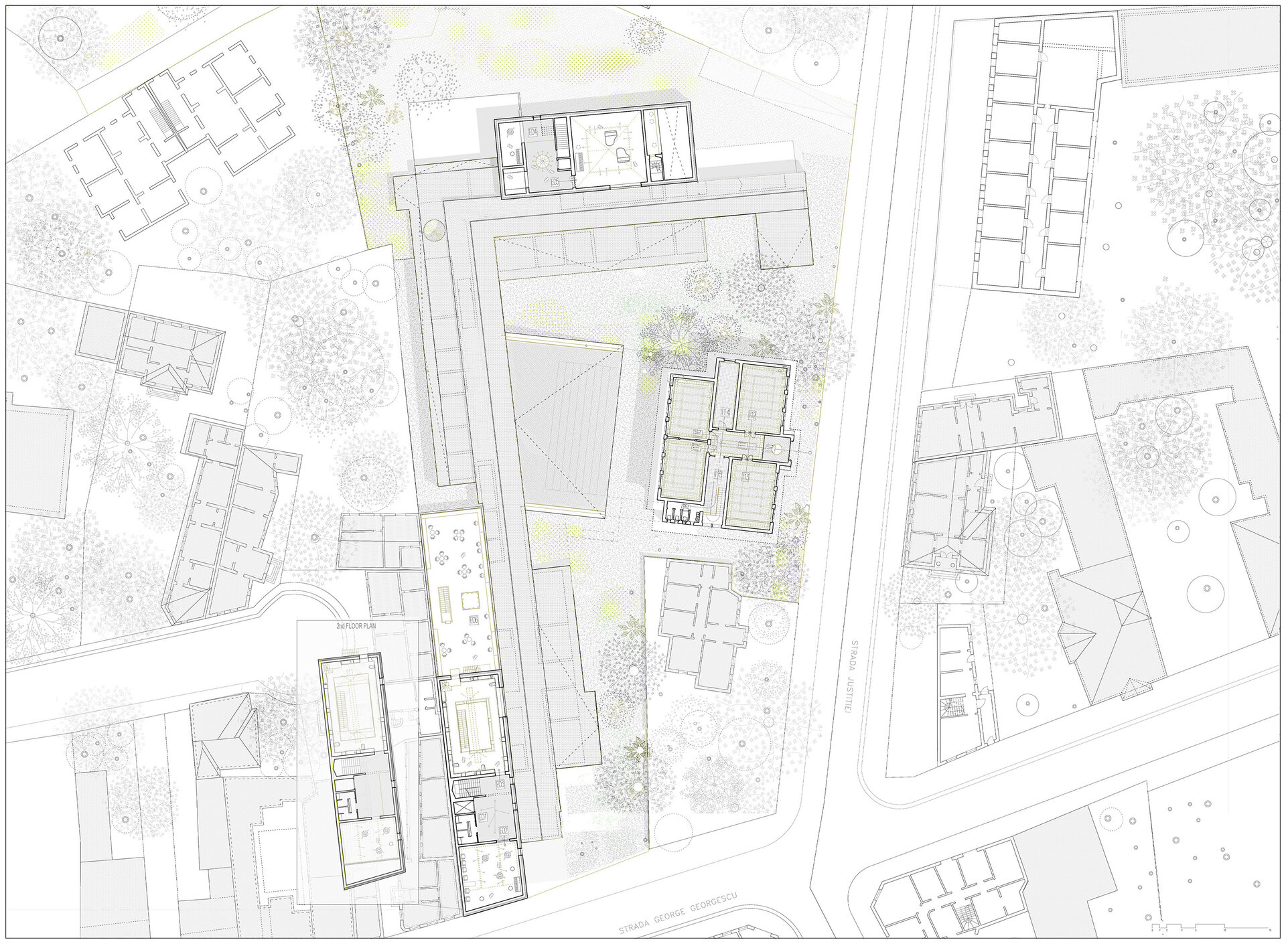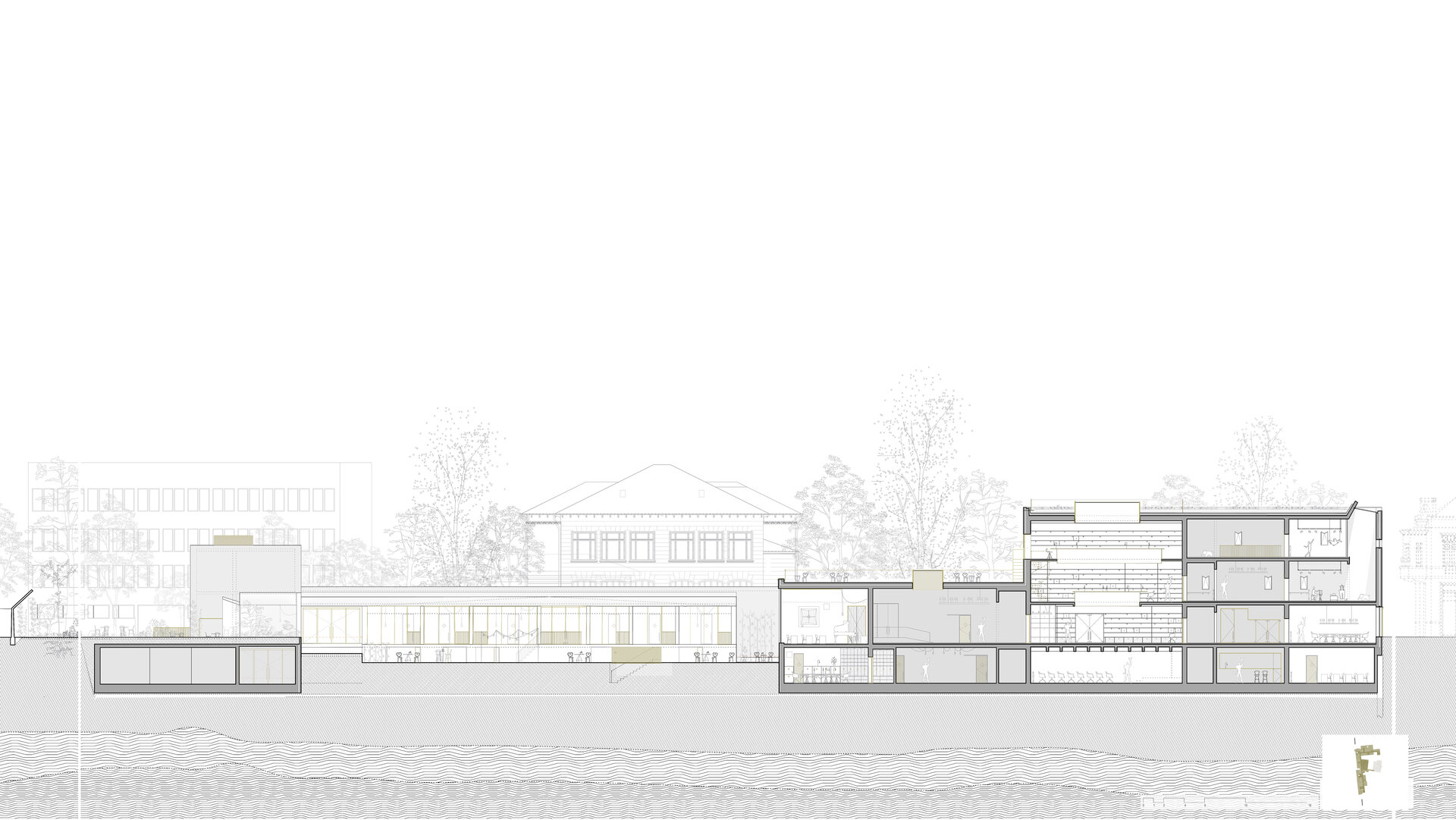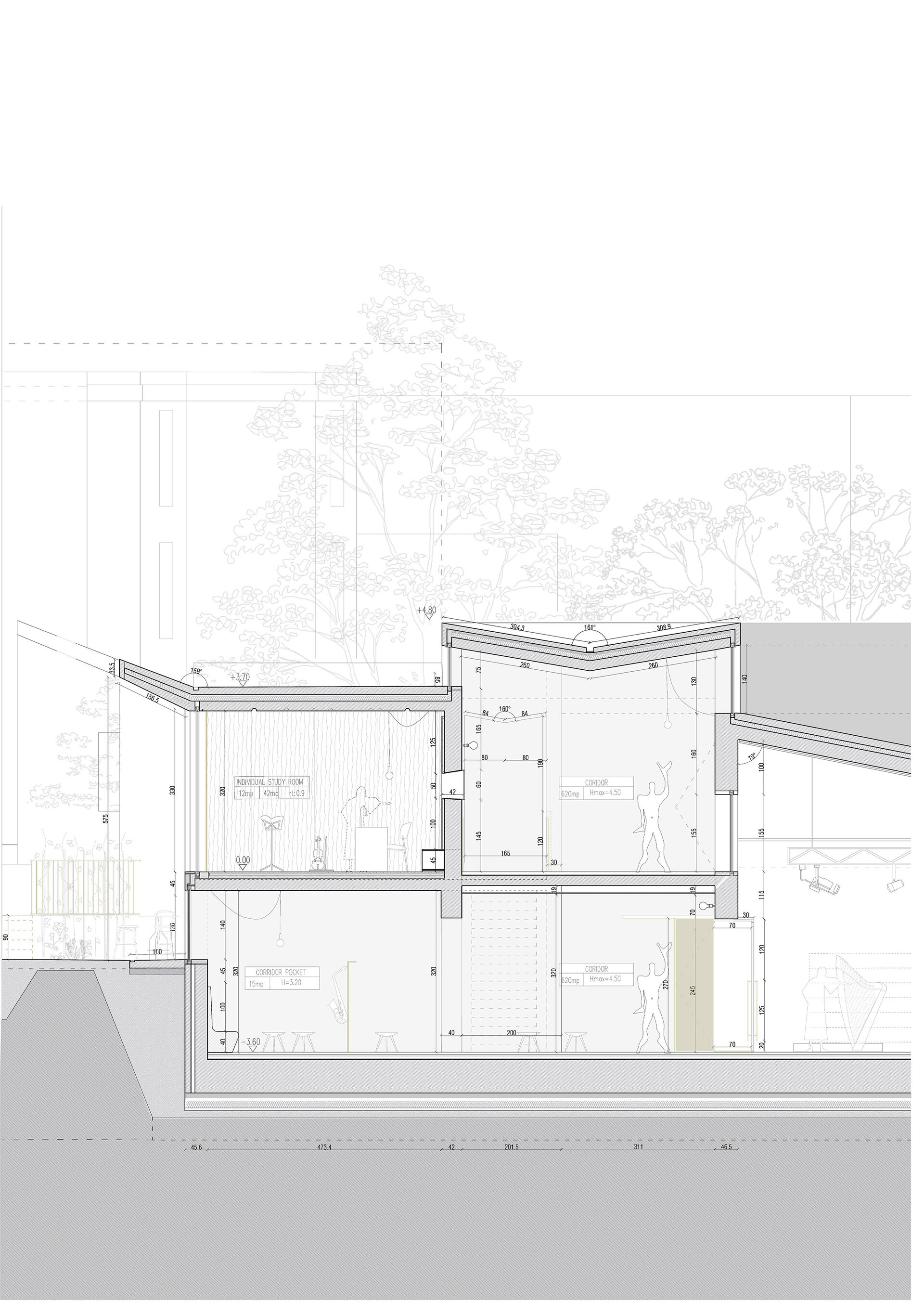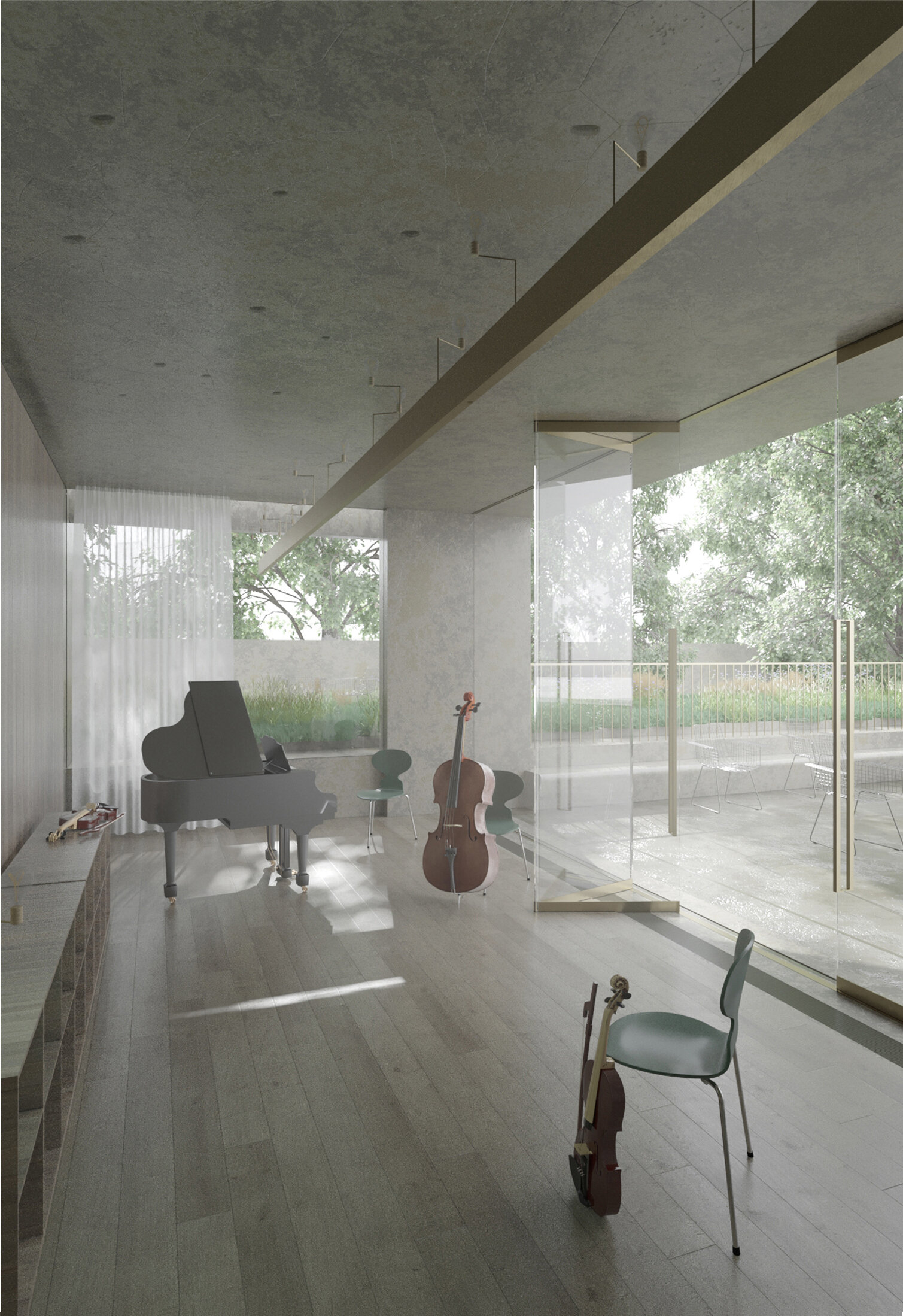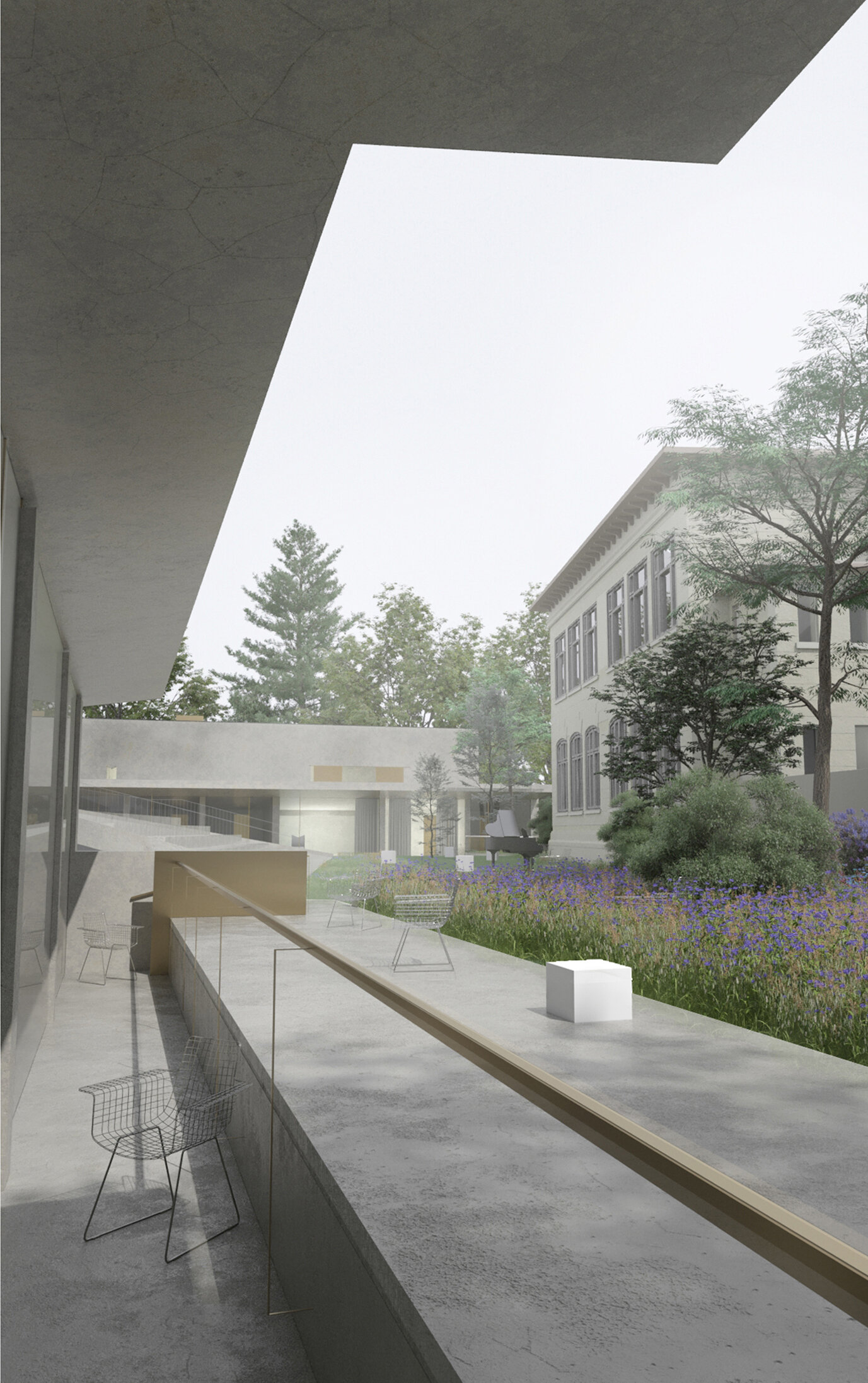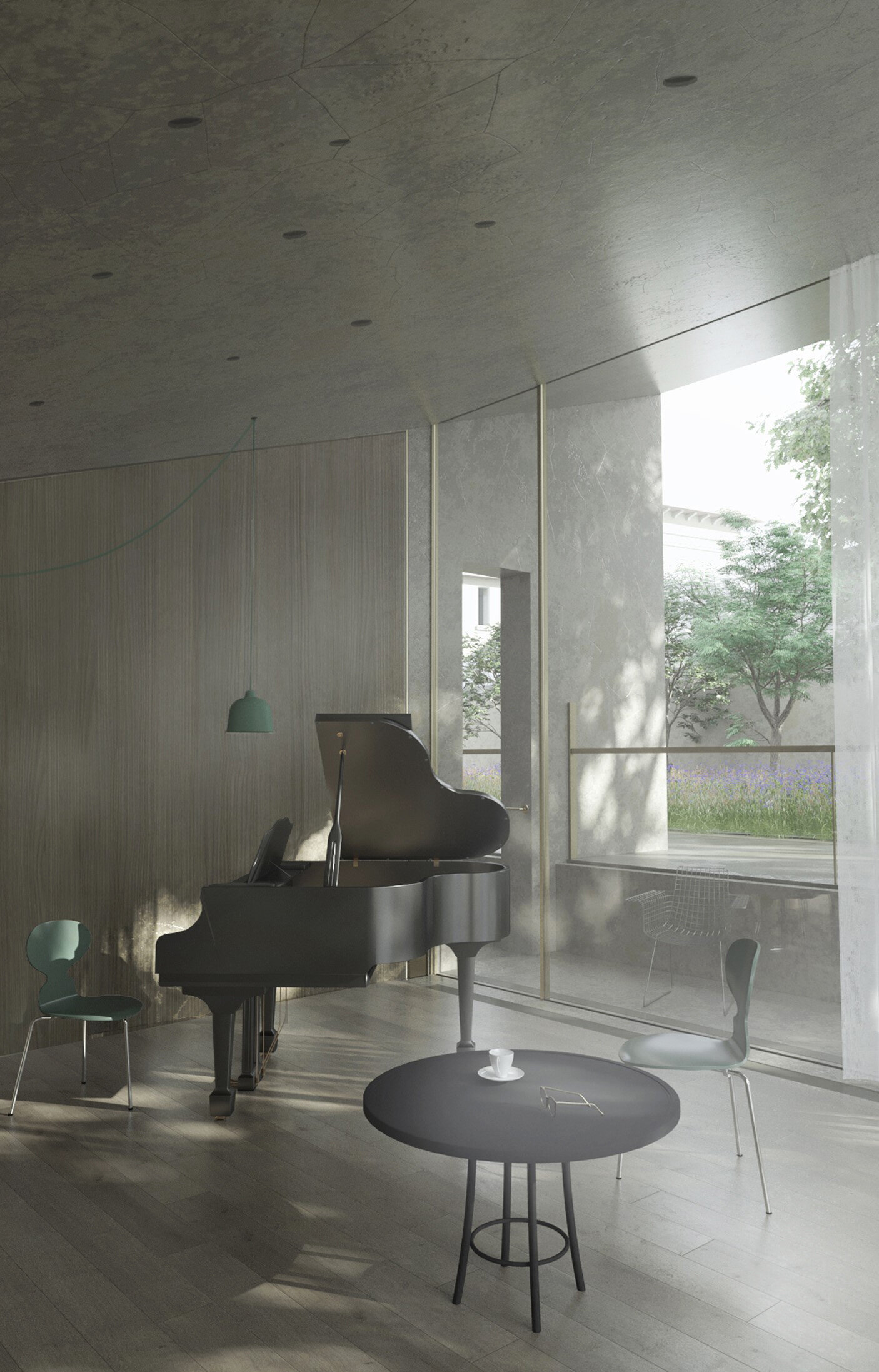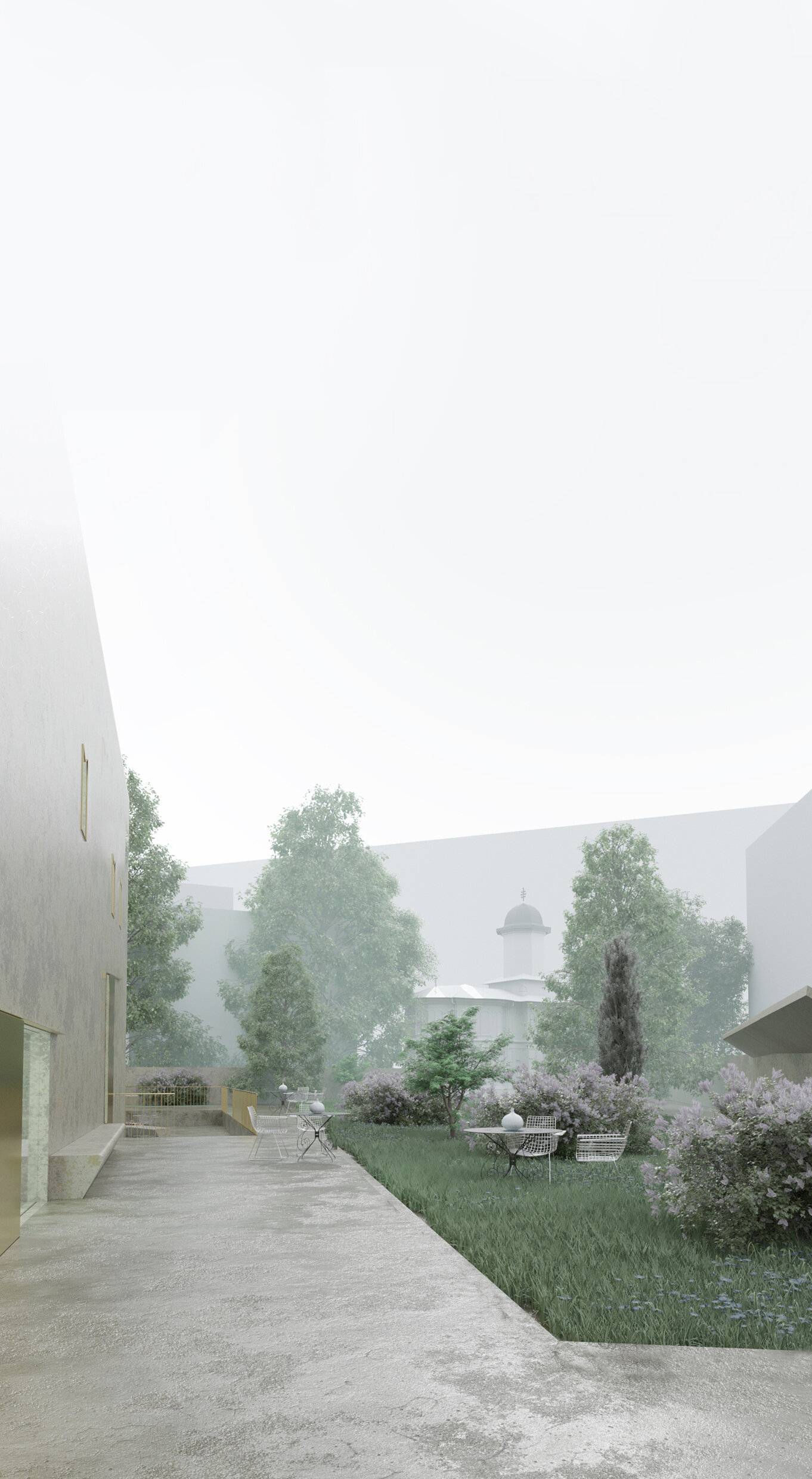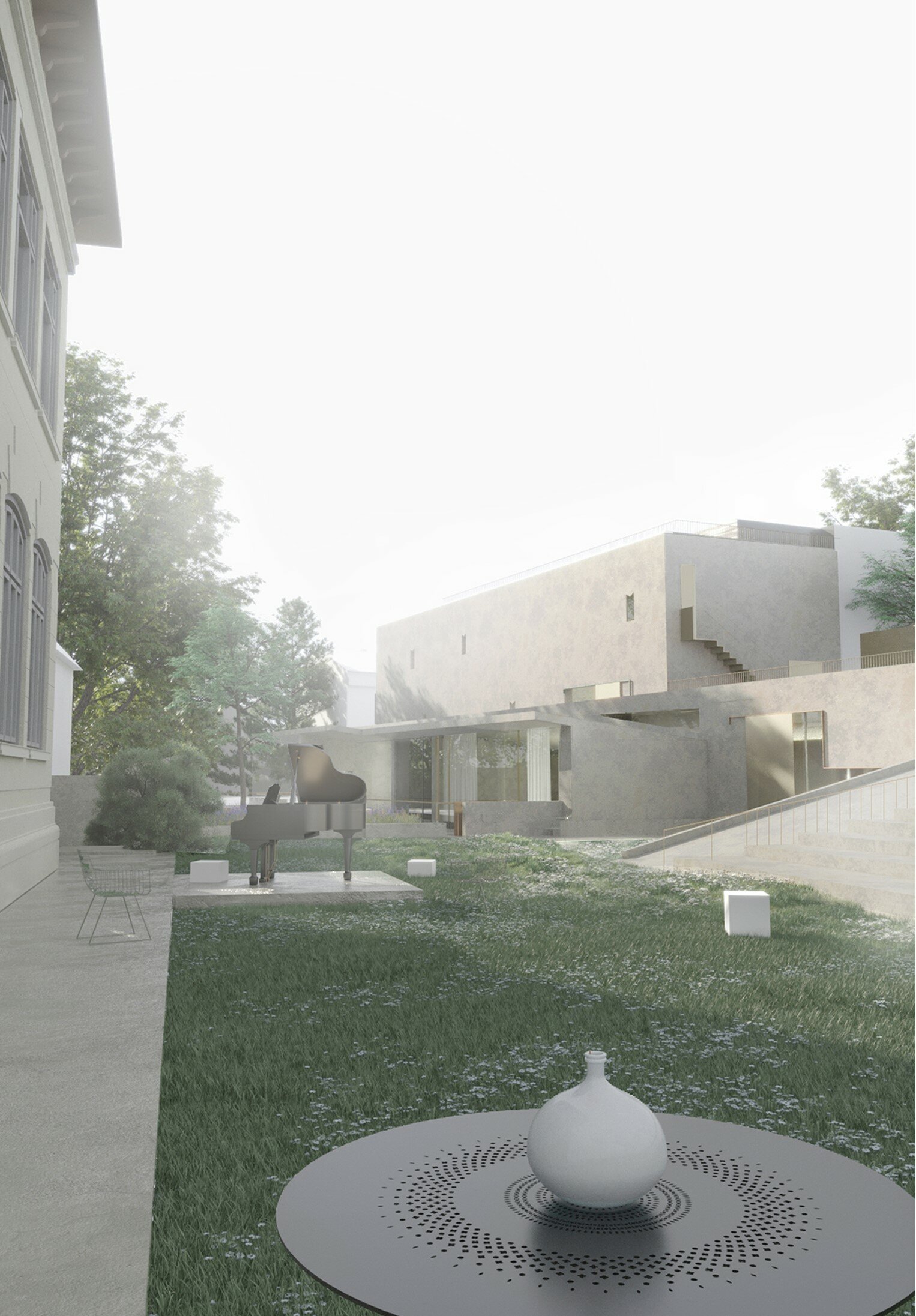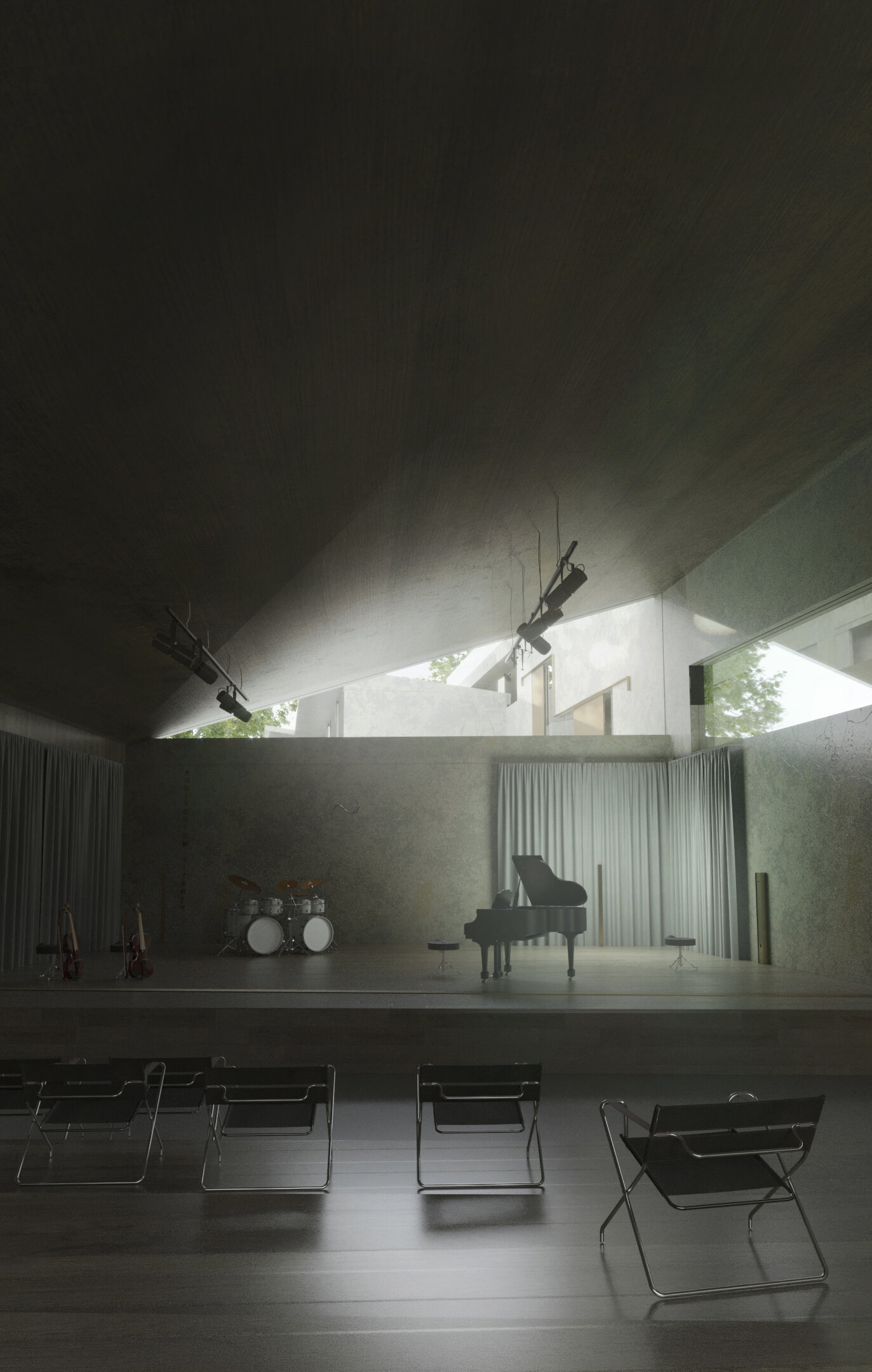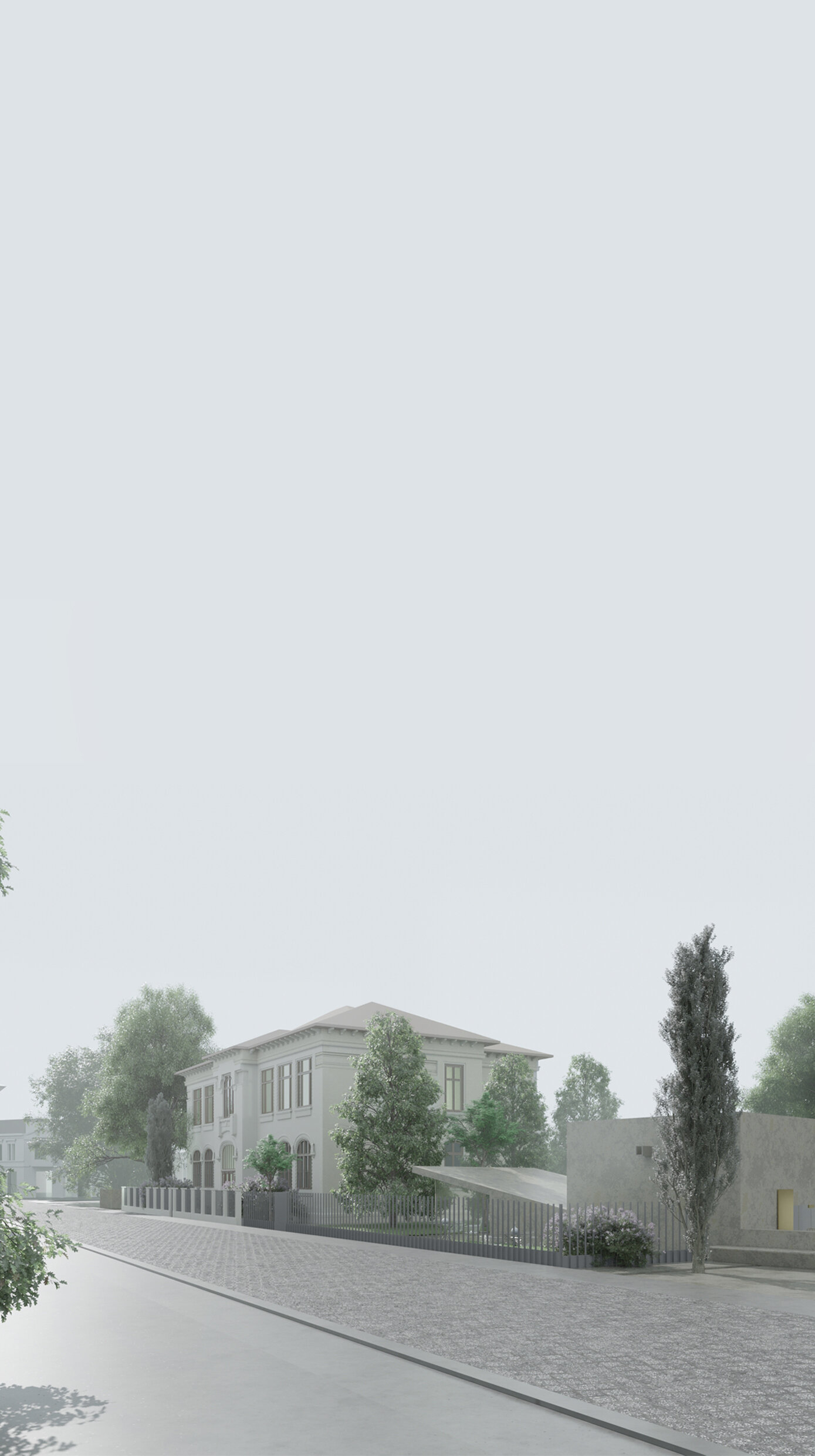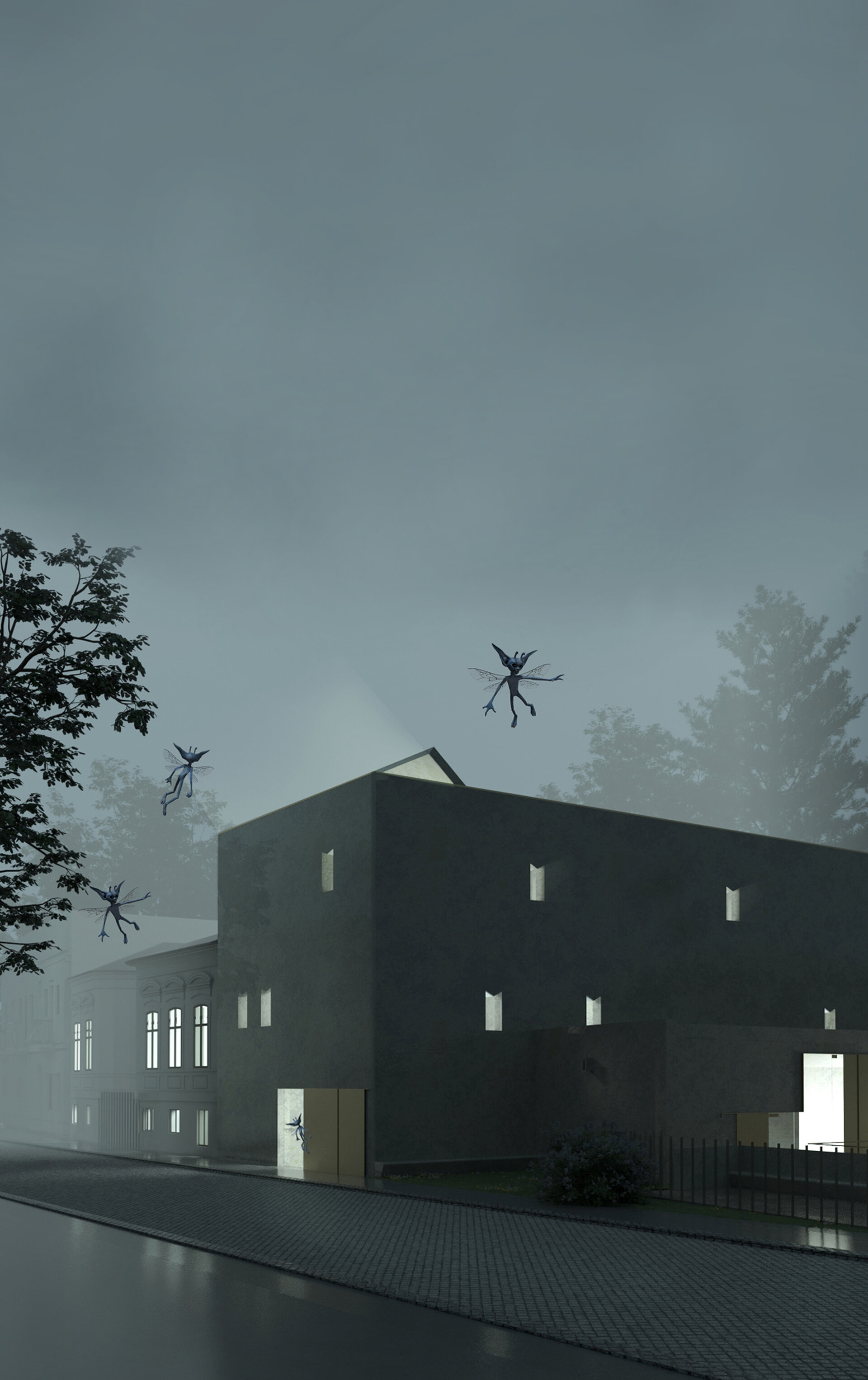
- Nomination for the “Research through Architecture / Architecture Diplomas” section
A courtyard with music. Arts highschool in Bucharest
Authors’ Comment
Inside the Antim neighborhood, on Justiției street, one can (still) find the abandoned building of the Elisabethan Institute. Here, more than 150 years ago, the first school for girls to teach in Romanian language was founded, in Bucharest. Aiming to initiate a discussion about the hidden potential of the diffuse built heritage of Bucharest, the project pursues to retrieve this forgotten fragment of the city, returning it to its initial community - the students. The sounds of a violin, a few piano notes or the incisive rhythm of some drums can be heard from the studying spaces that are articulated to the spine – the unifying gesture through the whole site.
The interior space becomes one with the exterior space, as all the classroom and the studying rooms look towards different types of smaller courtyards. Some of them are made for outdoor public concerts, some of them are hidden and can be only discovered gradually; the new coexists with the old, having no intention of dominating it.
The main idea of the project revolves around the spine as connecting gesture through the site. It emphasizes the directions of the historical urban fabric, embracing the Institute’s building. Different types of studying spaces are articulated to it, responding to the immediate context as well. Metaphorically, comparing the concept with the structure of a city, the spine would be like a street, a crowded and sometimes loud space, its pockets like some small squares and the study rooms like the houses, the private spaces of the city.
- Urban integration: Living on George Georgescu street
- Extension of the Theological Seminary of Roman
- Revitalising the historic district Mântuleasa – garden dwellings
- A courtyard with music. Arts highschool in Bucharest
- Văcărești Nature Reserve Infrastructure
- Walk through Walls
- “Tranzit House” – Center for contemporary art and thinking
- Revitalisation of Quarteirao Portugalia – Living spaces in Lisbon
- Nanotechnology Research Center – Floresti power plant conversion
- Institute for Reseach and Documentation of Arad’s Cultural Heritage
- The Royal Foundation. The center for awareness of Romanian royal values and patrimony
- A new identity for disadvantaged communities. Social assistance center in the 5th district of Bucharest
- The Museum of Communism
- Refurbishment and expansion of the Bath Pavilion, Băile Govora
- Chronicle of a chamber dance – Cesianu House and Tănase Theater
- BiO'ceanografic
- Fishmarket in Urayasu, Tokyo
- Hebrew heritage recovery in Chisinau. Community Center
- Constanta Port Maritime Museum
- Rural revitalization. Change of function for a Spiru Haret type school from Zorile village, Grădinari commune, Giurgiu county.
- Regeneration of the water front. Tha Tien market. Bangkok
- ACCADEMICA – Creative laboratories & University residences - Victoria Passage, Bucharest
- Polyvalent Theater and Arts Incubator
- The Agricultural Active Learning Center of Caracal, Romania
- Forest Soul – off-grid ecotourism complex
- Ir(recoverable) industrial ruin
- Sulina Shipyard – Reed Catalyst
- Conversion and extension. Hotel in Eforie Sud
- Rebuilding the Cantacuzino Domain. Pavilions and Equestrian Centre in the Gardens of Petit Trianon
- Floating Island: A scene of urban life and waterfront in Nice
